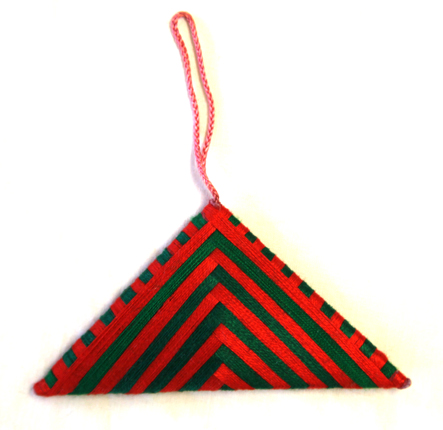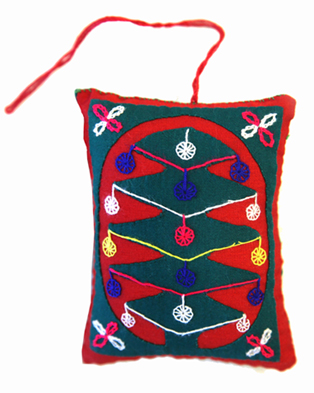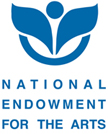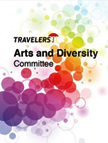Crafts and Ornaments |
|---|
CO11: A ball such as this one is used by young Hmong men and women during the Hmong New Year Festival in the courtship ball tossing game. Folk songs are sung while partners throw the ball back and forth to one another. This piece was hand-sewn with cotton fabric. Cotton is stuffed inside.
By Chee Xiong, 2011, 8 cm in diameter |
Back to Top |
CO12: This courtship ball was hand-sewn with a synthetic fabric over a small rubber ball.
By Yee Xiong, 2011, 5 cm in diameter |
Back to Top |
CO13: This ornament was developed utilizing batik and appliqué techniques. The white
By Ai Thao, 1980s, 5x5x2 cm |
Back to Top |
CO14: This piece functions as a keychain. It has a mountain motif or pyramid shape. Orange cotton fabric was cut and sewn after being embroidered with darning as well as outline and
By Pa Xiong, 2008, 8x7x2 cm |
Back to Top |
CO15: This ornament was made to be hung in the mirror of a car, used as a keychain ornament or on a school bag. The shape of the ornament is a pyramid, and it is hand embroidered with cross stitches. Colorful beads, rickracks, and pom poms are used as embellishments.
By an unknown artist, 2008, 8x8x9 cm Photo by Xai S. Lor, item at the Hmong Archives |
Back to Top |
CO16: This ornament was purchased at the Camacrafts store in Chiang Kham, near Ban Vinai Refugee Camp, Thailand. It is in a style that the Hmong from Luang Prabang, Laos, use as part of their headdress. This type of ornament is also found among the ethnic Iu Mien or Yao people, some of whom were also refugees in Ban Vinai. It is hand embroidered with cross-stitches and contains cotton yarn and beads.
|
Back to Top |
 |
CO17: Traditionally, a mountain or triangle shaped amulet pouch utilized by the Hmong would be sewn in red and stuffed with herbal medicine. These herbal medicines are thought to have scents and properties that ward off bad, evil, and unwanted spirits that cause children to cry at night. They are worn around the neck with a necklace. However, this particular artwork is a Christmas ornament inspired by the amulet mentioned above. It has the Christmas colors of red and green, also very popular in Hmong textiles. The ornament is decorated with mountain
By Lo Vang, 1984, 5x9x1 cm |
Back to Top |
CO18: This piece is intended to be used as a Christmas ornament. It was made with white monk’s cloth using cross stitched embroidery. The monk cloth was then cut into a heart shape and hand sewn. The figures depicted on the ornament include a pair of birds. These symbolize the affection and love of a couple. The birds are perched between a modified three headed elephant motif. The ornament is filled with cotton stuffing.
By T-Chue Ze, 1988, 5x5x3 cm Photo by Xai S. Lor, item at the Hmong Archives |
 |
CO19: This is a Christmas ornament made with cotton fabric. The fabric is cut into reverse
By Tong Thor, 1984, 9x7x4 cm |
Back to Top |
 |
CO20: This piece of embroidery work functions as a Christmas ornament. Cross-stitch
By Yer Vang, 1984, 7x5x2 cm |
Page 1 << Page 2 >> Page 3 |



